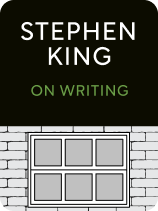

This article is an excerpt from the Shortform summary of "On Writing" by Stephen King. Shortform has the world's best summaries of books you should be reading.
Like this article? Sign up for a free trial here .
What is Stephen King’s writing process? How do the writing and revision processes differ?
Stephen King writes a lot, and has a finely tuned writing process. By studying Stephen King’s writing process, you can learn how to craft your writing process, and improve your own writing.
Read more about Stephen King’s writing process and how to approach your revision.
Stephen King: Writing Process and Revision
When you write your first draft, King suggests that you close your door. This is both literal and metaphorical. Literally, closing your door helps you focus and block out the outside world. This is part of Stephen King’s writing process.
Metaphorically, write the first draft of your story just for you. By and large, don’t worry about what anyone else thinks. There is no outside world. The story belongs to you. (As we’ll cover soon, there’s one exception—your ideal reader.)
When you rewrite, you need to open your door. You’ll think about your readers and how to make at least some of them happy. You’ll take in feedback from people you trust and grapple with reconciling their feedback with your vision. Stephen King’s writing process depends on this feedback.
The Writing Process
Here’s Stephen King’s writing process, from beginning to end.
- Write and finish the first draft with no help or advice from anyone else—their well-meaning words can trigger self-doubt (if critical) or make you complacent (if positive). Write as quickly as you comfortably can—this keeps your enthusiasm high and limits self-doubt from creeping in.
- When you finish the first draft, give the story to anyone who’s been dying to read your work, but demand that they not discuss your writing with you until you’re ready to. You need a break from your writing.
- Take a few days off from writing. Have fun and relax.
- When you’re ready, go back to writing, but write about something totally different from what you just finished drafting. King suggests taking at least 6 weeks off from your draft, working on shorter pieces like novellas or short stories.
- During this time, resist the temptation to read your draft. The point is to get distance from the draft, so you can be a more objective critic when you revise. It’ll be easier to “kill your darlings.”
- Finally, go back to your draft. By this point, it should feel oddly familiar yet unrecognizable, like the work of someone else who writes suspiciously like you. Read the draft in one sitting, if possible.
- Note fixes for specific issues, like grammar and usage, deleting adverbs, plot holes, and character motivations.
- Also ask yourself big-picture questions. What is the story about? Is there a theme? Are there recurring elements? Is the story coherent?
- Go back through and revise for your second draft. Fix the small specific issues and polish your big picture ideas.
- Once you define your theme, add scenes and shape the story to strengthen the theme.
- After you finish, give the second draft to a small group of readers you trust. Listen to their feedback.
- Incorporate the feedback as you like (more on this next). This can be your next draft, or even your final draft.
- Use however many revision cycles you’re comfortable with. King’s standard process takes two drafts and a final polish.
For Stephen King, the writing process is an extremely important part of writing.

———End of Preview———
Like what you just read? Read the rest of the world's best summary of Stephen King's "On Writing" at Shortform .
Here's what you'll find in our full On Writing summary :
- Stephen King's personal writing habits that led to superstar books like Misery and It
- How to make a story and characters feel real
- Why you should never use adverbs






